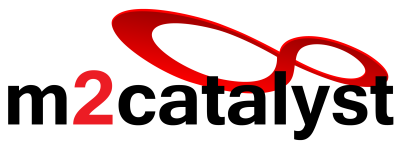More Than 644,000 Populated Locations in the U.S. Are Further Than 5km From the Nearest Detected 4G/5G Mobile Broadband Cell Site

ALISO VIEJO, Calif., July 14, 2022 (Newswire.com) - Today, M2Catalyst announced the release of its first U.S. digital divide report along with digital divide reports from 30+ other countries. By merging two powerful global data sets, WorldPop and the Network Cell Info of M2Catalyst bring critical new insights into the global effort to bridge the Digital Divide.
WorldPop provides the population density for every country down to grids smaller than one square kilometer. When overlaid by the hundreds of billions of network performance data points contributed by the Network Cell Info community of M2Catalyst, underserved communities were identified, i.e., those without access to mobile broadband (4G/5G) or even to any mobile signal whatsoever. This enables the M2Catalyst reports to focus on more than just network speed, determining where the world's population does not have mobile broadband (4G/5G) access, right down to the small communities in every country.
Key Findings
The U.S report revealed that there are more than 644,000 populated locations of one square kilometer in area within the U.S. that are further than three miles from the nearest detected 4G/5G mobile broadband cell site. This not only confirms the existence of the digital divide in the U.S. today, but also provides a roadmap for Mobile Network Operators (MNOs) to fill in the gaps in their networks.
The United States ranked 18th out of 33 countries according to the "M2Catalyst Digital Divide Score." Additionally, the U.S report revealed that 77% of mobile broadband cells are 4G, but with 5G growth rates five times that of 4G, the ratio is set to change rapidly.
The top three MNOs in the U.S market (T-Mobile, AT&T, and Verizon) all make continued investments in both bridging the digital divide and advancing the quality of connectivity through the addition of the all-important 5G services. However, M2Catalyst's analysis of the following data provides a clear picture of which MNO leads the way in the race to bridge the digital divide and where the biggest opportunity for each MNO exists:
- Mobile Broadband Quarterly Summary
- Mobile Broadband Expansion Rate
- Coverage Distribution (Metro vs Rural)
- Technology (4G vs 5G) Comparisons
- Where the 5G technology shift is focused
- Differences in 5G locations per Mobile Network Operator (MNO)
- The number and distribution of underserved locations
The full findings from the report can be found here: https://www.m2catalyst.com/unitedstates-q1r-22.
About M2Catalyst
M2Catalyst measures, analyzes, and reports the experience of mobile users around the world, across every mobile operator worldwide. Leveraging its powerful Crowd SiteIntel (CSI) platform, the automated analysis of 5G Densification requirements can be performed for small cell, DAS, rooftop, and Macro sites. CSI also allows for the analysis of key RF metrics for network performance (signal quality, signal strength, signal-to-noise-ratio) and data tonnage. Learn more here.
Source: M2Catalyst
